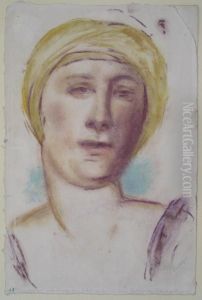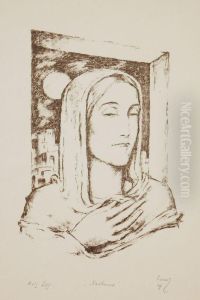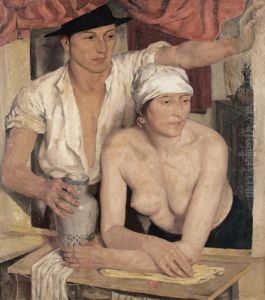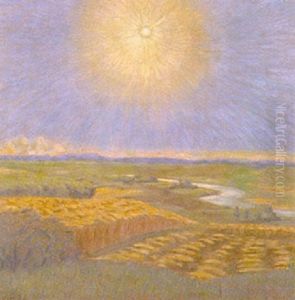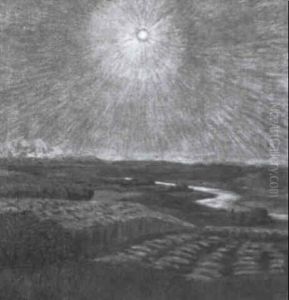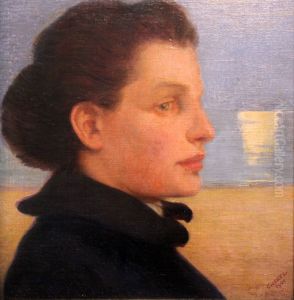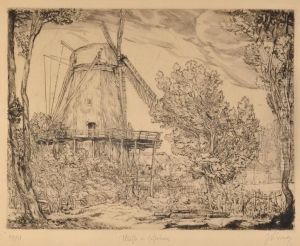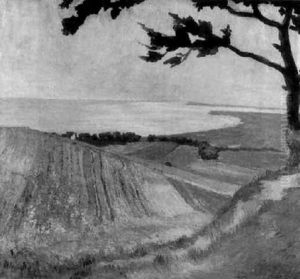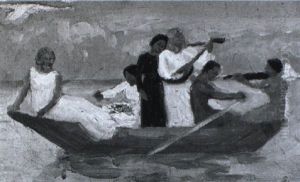Johann Vincenz Cissarz Paintings
Johann Vincenz Cissarz was a German painter, graphic artist, and designer who made a significant contribution to the applied arts and art education in Germany during the late 19th and early 20th centuries. He was born on February 22, 1873, in Düsseldorf, Germany, and was active during a period of artistic transition, where there was a strong inclination towards the Jugendstil, the German version of Art Nouveau, which emphasized a new artistic language that broke away from historical eclecticism.
Cissarz studied at the Royal Arts and Crafts School in Frankfurt am Main, where he was influenced by the Jugendstil movement. His work was characterized by a combination of traditional craft with modern design, and he was known for his illustrative work, typography, and poster art – often marked by stylized linearity and a clear, graphic quality. He became a prominent figure in the German Werkbund, an association that aimed to integrate traditional crafts and industrial mass-production techniques.
Throughout his career, Cissarz maintained a focus on the applied arts. He designed book covers, postage stamps, furniture, and even worked on interior designs. His work contributed to the visual identity of Jugendstil and was widely reproduced thus influencing the aesthetic tastes of the era. Cissarz also taught at the Städelschule in Frankfurt and later at the Karlsruhe Academy of Fine Arts, where he influenced a generation of artists and designers with his philosophy of integrating art into everyday life.
Johann Vincenz Cissarz passed away on December 22, 1942, in Stuttgart, Germany, leaving behind a legacy of work that is still recognized for its importance to the development of modern design in Germany. His contributions to the Werkbund and his teaching career helped shape the direction of German art and design in the early 20th century.
